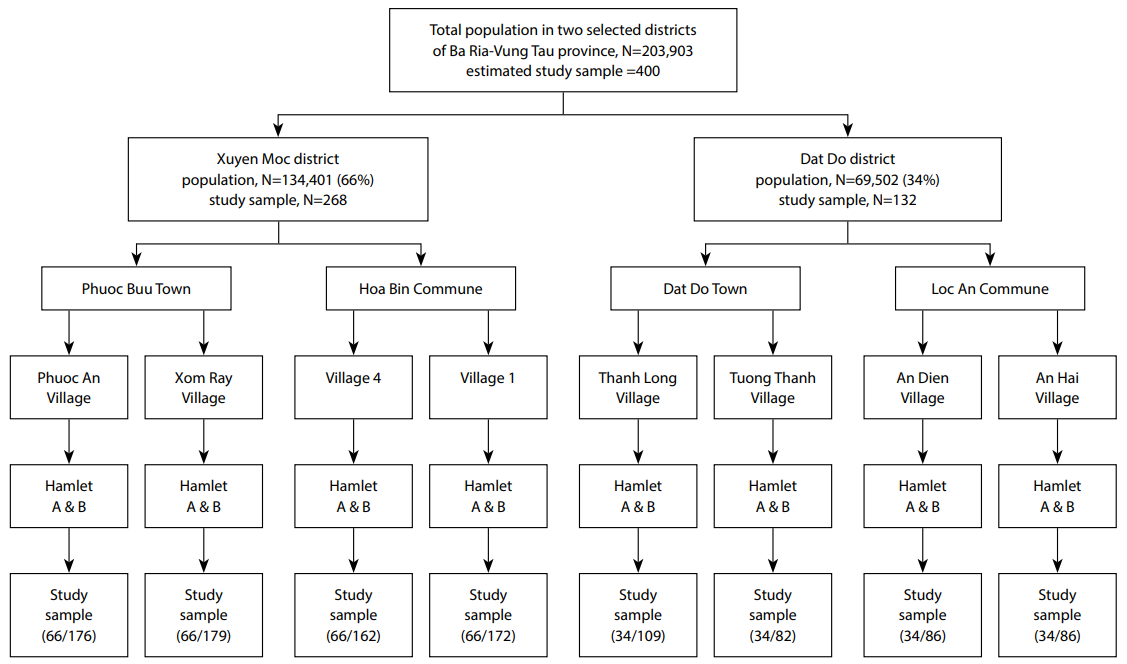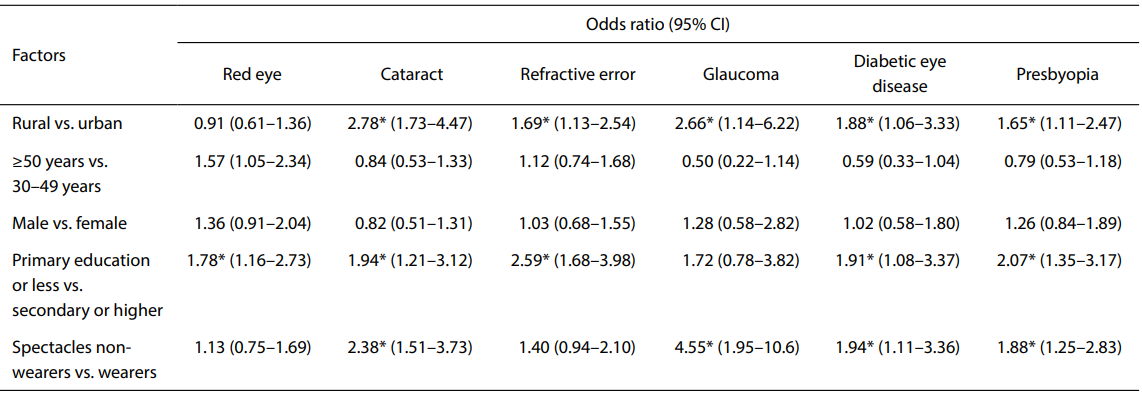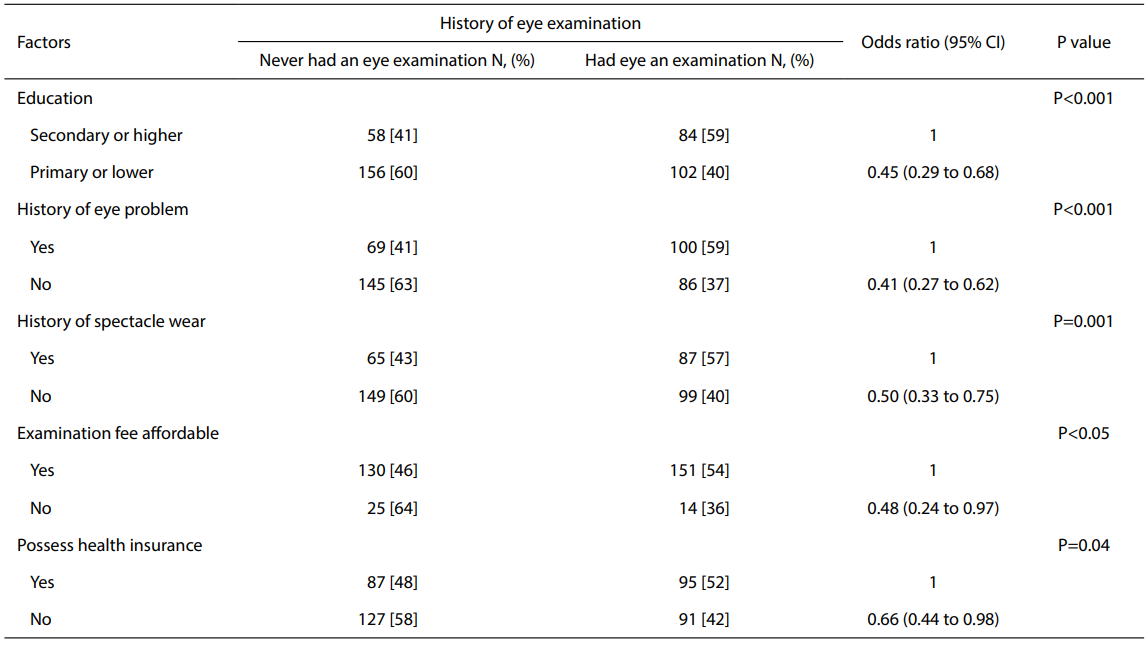1、World%20Health%20Organization.%20Universal%20eye%20health%3A%20a%20global%20action%20plan%202014%E2%80%932019.%20Accessed%2019%20June%2C%202014.%20Available%20online%3A%20http%3A%2F%2Fwww.who.int%2Fblindness%2FAP2014_19_%0AEnglish.pdf%3Fua%3D1.
2、Bourne RR, Stevens GA, White RA, et al. Causes of vision loss worldwide, 1990-2010: a systematic analysis. Lancet Glob Health 2013;1:e339-49.
3、Wong TY, Loon SC, Saw SM. he epidemiology of age related eye diseases in Asia. Br J Ophthalmol 2006;90:506-11.
4、Limburg H. Results of Rapid Assessment for Avoidable Blindness (RAAB) in 16 provinces of Viet Nam. Hanoi: Viet Nam National Institute of Ophthalmology, 2008.
5、General%20statistics%20offf%20ce%20of%20Vietnam.%20The%202009%20Vietnam%20Population%20and%20Housing%20census%3A%20Major%20ff%20ndings.%20Accessed%204%20March%2C%202014.%20Available%20online%3A%20http%3A%2F%2Fwww.gso.gov.vn%2F%20default_en.aspx%3Ftabid%3D515%26idmid%3D5%26ItemID%3D9813.
6、Vela C, Samson E, Zunzunegui MV, et al. Eye care utilization by older adults in low, middle, and high income countries. BMC Ophthalmol 2012;12:5.
7、Hubley J, Gilbert C. Eye health promotion and the prevention of blindness in developing countries: critical issues. Br J Ophthalmol 2006;90:279-84.
8、Livingston PM, McCarty CA, Taylor HR. Knowledge, attitudes, and self care practices associated with age related eye disease in Australia. Br J Ophthalmol 1998;82:780-5.
9、Huang OS, Tay WT, Tai ES, et al. Lack of awareness amongst community patients with diabetes and diabetic retinopathy: the Singapore Malay eye study. Ann Acad Med Singapore 2009;38:1048-55
10、Huang OS, Zheng Y, Tay WT, et al. Lack of awareness of common eye conditions in the community. Ophthalmic Epidemiol 2013;20:52-60.
11、Shrestha MK, Guo CW, Maharjan N, et al. Health literacy of common ocular diseases in Nepal. BMC Ophthalmol 2014;14:2.
12、Ormsby GM, Arnold AL, Busija L, et al. The Impact of Knowledge and Attitudes on Access to Eye-Care Services in Cambodia. Asia Pac J Ophthalmol (Phila) 2012;1:331-5.
13、Hobday K, Ramke J, du Toit R. Eye health promotion in Western Paciff c island countries. Clin Experiment Ophthalmol 2011;39:584-5.
14、Dandona R, Dandona L, John RK, et al. Awareness of eye diseases in an urban population in southern India. Bull World Health Organ 2001;79:96-102.
15、Lau JT, Lee V, Fan D, et al. Knowledge about cataract, glaucoma, and age related macular degeneration in the Hong Kong Chinese population. Br J Ophthalmol 2002;86c:1080-4.
16、World Health Organization. Global initiative for the elemination of avoidable blindness: action plan 2006-2011. Accessed 27 June, 2014. Available online: http://www.who. int/iris/handle/10665/43754
17、Krishnaiah S, Kovai V, Srinivas M, et al. Awareness of glaucoma in the rural population of Southern India. Indian J Ophthalmol 2005;53:205-8.
18、Sathyamangalam RV, Paul PG, George R, et al. Determinants of glaucoma awareness and knowledge in urban Chennai. Indian J Ophthalmol 2009;57:355-60.
19、Tenkir A, Solomon B, Deribew A. Glaucoma awareness among people attending ophthalmic outreach services in Southwestern Ethiopia. BMC Ophthalmol 2010;10:17.
20、Thapa SS, Berg RV, Khanal S, et al. Prevalence of visual impairment, cataract surgery and awareness of cataract and glaucoma in Bhaktapur district of Nepal: the Bhaktapur
Glaucoma Study. BMC Ophthalmol 2011;11:2.
21、Rani PK, Raman R, Subramani S, et al. Knowledge of diabetes and diabetic retinopathy among rural populations in India, and the inff uence of knowledge of diabetic
retinopathy on attitude and practice. Rural Remote Health 2008;8:838.
22、Quang Binh T, Tran Phuong P, Thi Nhung B, et al. Prevalence and correlates of hyperglycemia in a rural population, Vietnam: implications from a cross-sectional study. BMC Public Health 2012;12:939.
23、Paudel P, Ramson P, Naduvilath T, et al. Prevalence of vision impairment and refractive error in school children in Ba Ria - Vung Tau province, Vietnam. Clin Experiment
Ophthalmol 2014;42:217-26.
24、Holden BA, Fricke TR, Ho SM, et al. Global vision impairment due to uncorrected presbyopia. Arch Ophthalmol 2008;126:1731-9.






